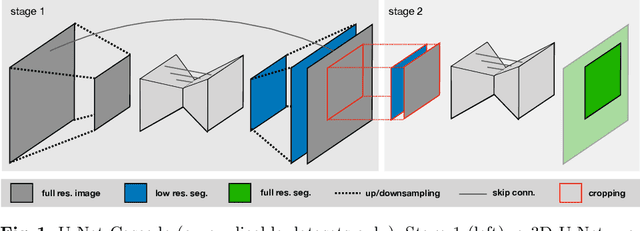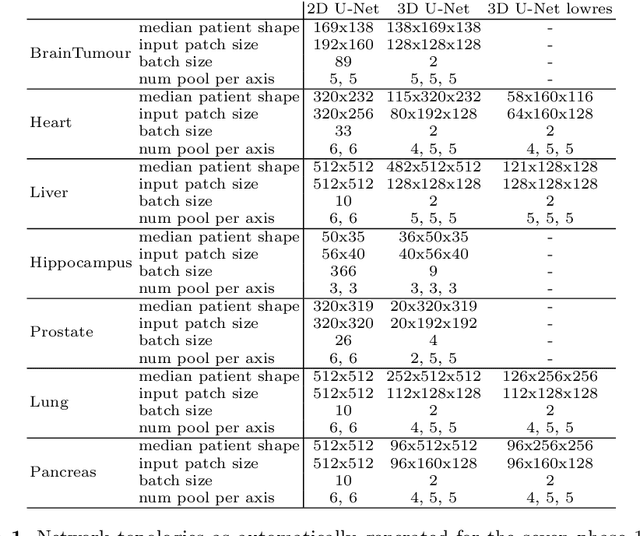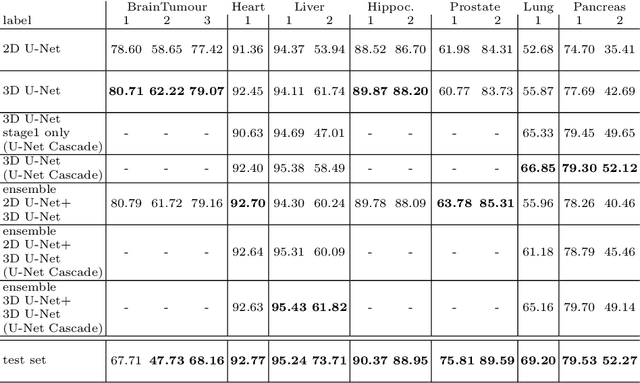Tobias Norajitra
Comparative Benchmarking of Failure Detection Methods in Medical Image Segmentation: Unveiling the Role of Confidence Aggregation
Jun 05, 2024



Abstract:Semantic segmentation is an essential component of medical image analysis research, with recent deep learning algorithms offering out-of-the-box applicability across diverse datasets. Despite these advancements, segmentation failures remain a significant concern for real-world clinical applications, necessitating reliable detection mechanisms. This paper introduces a comprehensive benchmarking framework aimed at evaluating failure detection methodologies within medical image segmentation. Through our analysis, we identify the strengths and limitations of current failure detection metrics, advocating for the risk-coverage analysis as a holistic evaluation approach. Utilizing a collective dataset comprising five public 3D medical image collections, we assess the efficacy of various failure detection strategies under realistic test-time distribution shifts. Our findings highlight the importance of pixel confidence aggregation and we observe superior performance of the pairwise Dice score (Roy et al., 2019) between ensemble predictions, positioning it as a simple and robust baseline for failure detection in medical image segmentation. To promote ongoing research, we make the benchmarking framework available to the community.
cOOpD: Reformulating COPD classification on chest CT scans as anomaly detection using contrastive representations
Jul 14, 2023



Abstract:Classification of heterogeneous diseases is challenging due to their complexity, variability of symptoms and imaging findings. Chronic Obstructive Pulmonary Disease (COPD) is a prime example, being underdiagnosed despite being the third leading cause of death. Its sparse, diffuse and heterogeneous appearance on computed tomography challenges supervised binary classification. We reformulate COPD binary classification as an anomaly detection task, proposing cOOpD: heterogeneous pathological regions are detected as Out-of-Distribution (OOD) from normal homogeneous lung regions. To this end, we learn representations of unlabeled lung regions employing a self-supervised contrastive pretext model, potentially capturing specific characteristics of diseased and healthy unlabeled regions. A generative model then learns the distribution of healthy representations and identifies abnormalities (stemming from COPD) as deviations. Patient-level scores are obtained by aggregating region OOD scores. We show that cOOpD achieves the best performance on two public datasets, with an increase of 8.2% and 7.7% in terms of AUROC compared to the previous supervised state-of-the-art. Additionally, cOOpD yields well-interpretable spatial anomaly maps and patient-level scores which we show to be of additional value in identifying individuals in the early stage of progression. Experiments in artificially designed real-world prevalence settings further support that anomaly detection is a powerful way of tackling COPD classification.
nnU-Net: Self-adapting Framework for U-Net-Based Medical Image Segmentation
Sep 27, 2018


Abstract:The U-Net was presented in 2015. With its straight-forward and successful architecture it quickly evolved to a commonly used benchmark in medical image segmentation. The adaptation of the U-Net to novel problems, however, comprises several degrees of freedom regarding the exact architecture, preprocessing, training and inference. These choices are not independent of each other and substantially impact the overall performance. The present paper introduces the nnU-Net ('no-new-Net'), which refers to a robust and self-adapting framework on the basis of 2D and 3D vanilla U-Nets. We argue the strong case for taking away superfluous bells and whistles of many proposed network designs and instead focus on the remaining aspects that make out the performance and generalizability of a method. We evaluate the nnU-Net in the context of the Medical Segmentation Decathlon challenge, which measures segmentation performance in ten disciplines comprising distinct entities, image modalities, image geometries and dataset sizes, with no manual adjustments between datasets allowed. At the time of manuscript submission, nnU-Net achieves the highest mean dice scores across all classes and seven phase 1 tasks (except class 1 in BrainTumour) in the online leaderboard of the challenge.
 Add to Chrome
Add to Chrome Add to Firefox
Add to Firefox Add to Edge
Add to Edge